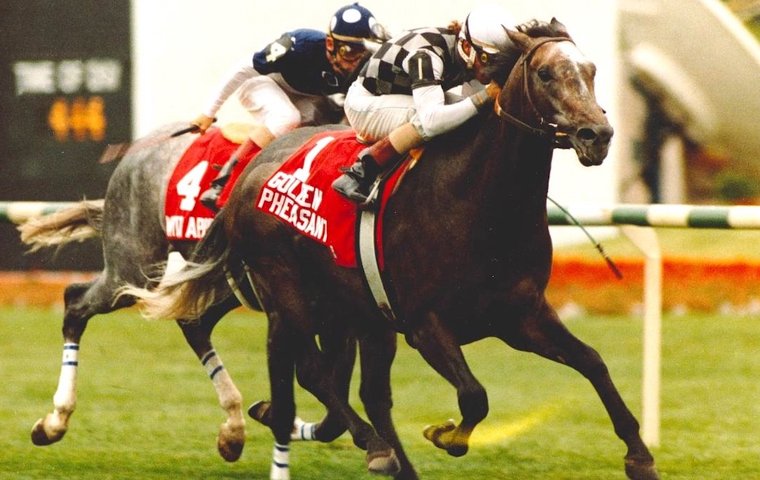
Ahead of the Japan Cup on Sunday [Nov 26], Jay Hovdey continues his unmissable series by recalling the quirky roan who took Tokyo by storm under Gary Stevens in 1991 for the legendary ‘Bald Eagle’ Charlie Whittingham
This is the time of year when nostalgia fills the heart with fond remembrances of holidays past, departed friends, family gatherings, and those bygone days when Thoroughbreds from North America were in the thick of things when conversations turned to the Japan Cup.
One of those Thoroughbreds was Golden Pheasant, sometimes frail of limb but always stout of spirit when rising to the greatest occasions. He was a horse of considerable presence, owned by celebrities, and always a favorite in this corner because of his blistering finish, not to mention a pedigree that summoned tales to tell around the campfires.
With the 43rd running of the Japan Cup on Sunday [Nov 26], Golden Pheasant comes to mind once again because of his place in the history of the race. Per usual, there will be no North American representation – not that anyone would want to travel halfway around the world to run against Equinox, the world’s #1-ranked racehorse, the fillies’ Triple Crown winner Liberty Island and several more Classic winners.
Still, it is fair to say that horses from these fair shores played a significant role in putting the Japan Cup on the map from its inception in 1981. The perception of international acceptance was important to a racing culture anxious to join the global community. If North Americans could make the long journey, handle a strict quarantine, and perform well in the event, the quality bar would be set at a world-class level.
So they came, and often conquered. Mairzy Doates, Half Iced and Pay The Butler were winners during the Cup’s first decade. Frost King, The Very One, Southjet and Ode hit the board, as did Pay The Butler in defense of his title.
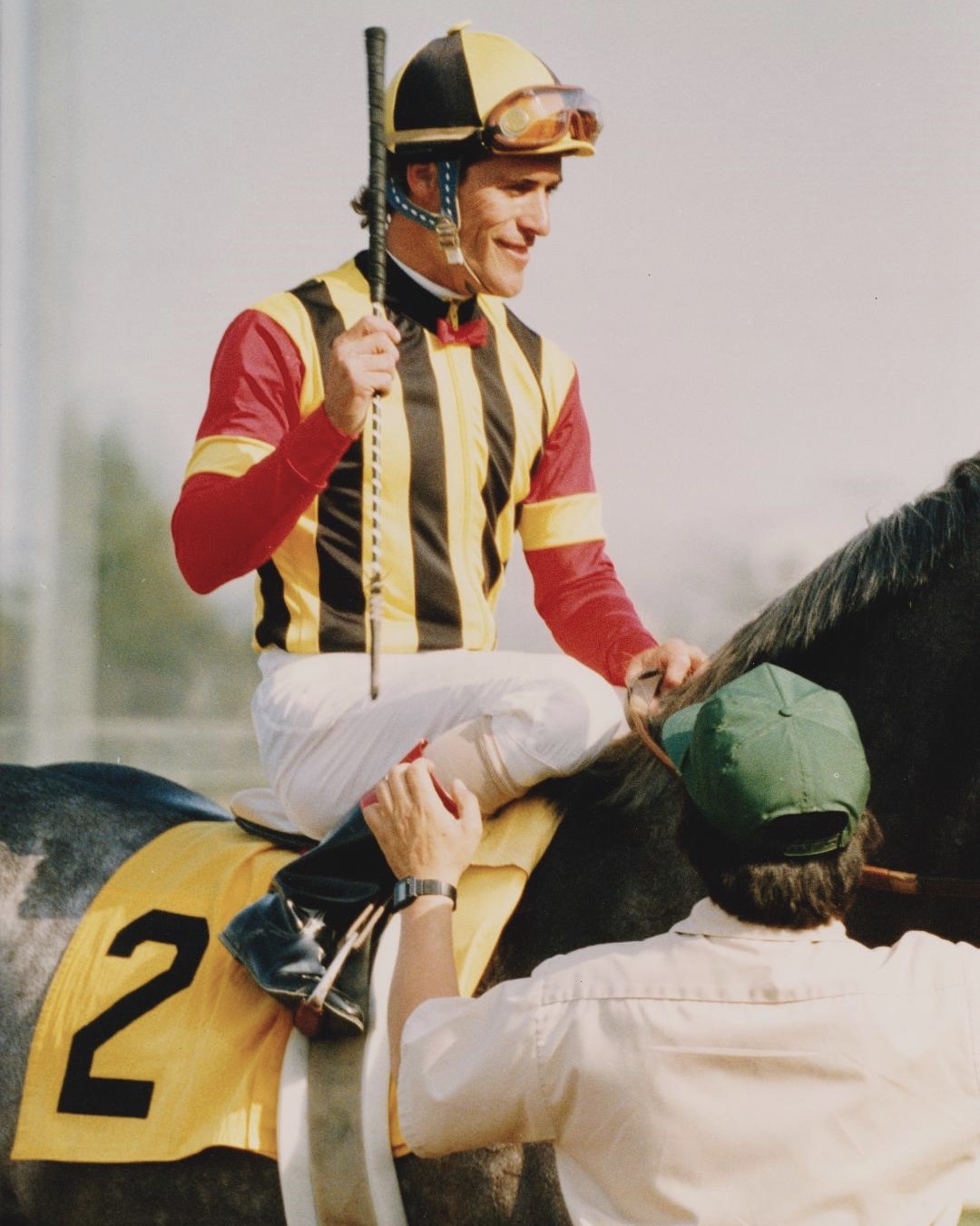 It was a great age. Owners, trainers, and jockeys returned to the States with celebratory tales of Japanese facilities, Japanese fans, and Japanese hospitality.
It was a great age. Owners, trainers, and jockeys returned to the States with celebratory tales of Japanese facilities, Japanese fans, and Japanese hospitality.
Rite of passage
A swing at the Japan Cup became a rite of passage for anyone who thought they had a horse who could measure up.
And then, poof! It was over. The last horse trained in the US to be a factor in the Japan Cup was Sarafan, trained by Neil Drysdale, who finished second to Falbrav in 2002 when the Cup was run at Nakayama during the renovation of Tokyo racecourse.
Before than, Paradise Creek missed by a nasty nose to Marvelous Crown in 1994, and Kotashaan finished a frustrating second to Legacy World in 1993 when Kent Desormeaux misjudged the finish line. They might not have won anyway, but still …
So Americans are left with their Japan Cup memories, now fading fast. Thank goodness, then, for that last flash of fame, on Nov. 24, 1991, when Golden Pheasant carried Gary Stevens and Old Glory to victory over a field that would have been tough in any mile-and-a-half contest.
Golden Pheasant was bred in Kentucky by Carelaine Farm & Vintage Meadow Farm. His sire, Caro, led the French stallion table in 1977, and as a racehorse he took the 1970 Poule d’Essai des Poulains (on the DQ of Faraway Son) along with four major races in 1971, including the Prix Ganay.
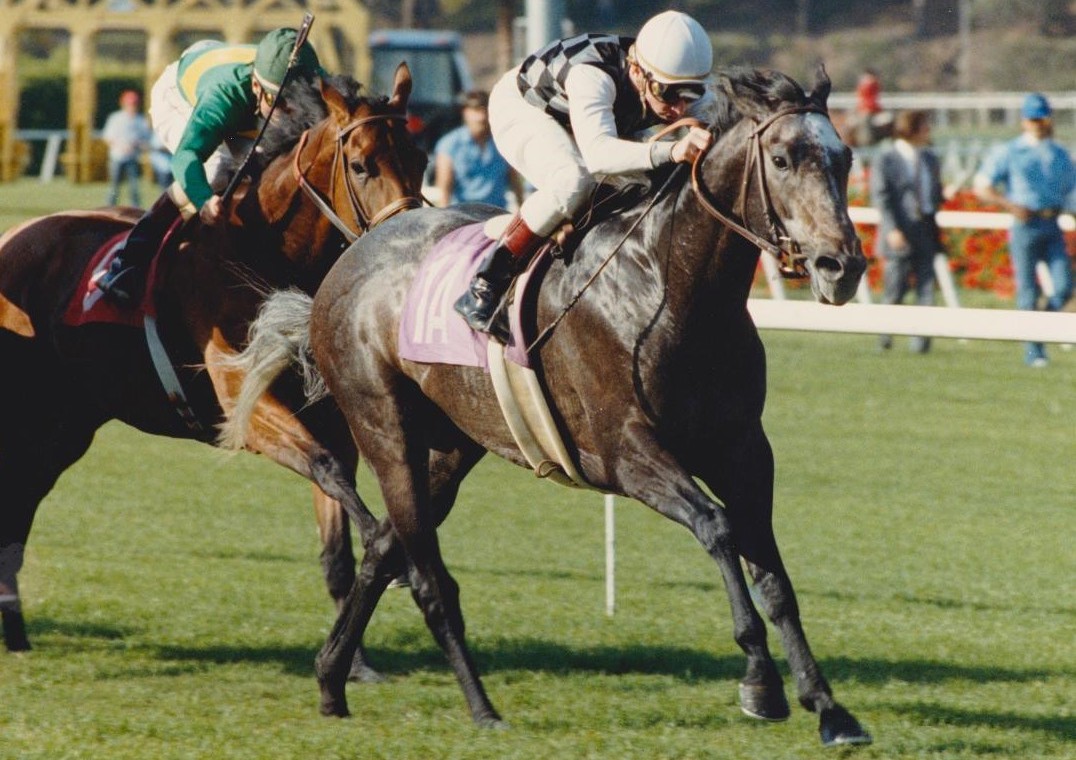 Caro’s sire, Fortino, was fast enough to win the Prix de l’Abbaye de Longchamp for the fabled Francois Mathet. As a stallion, however, he was sold off to Japan before Caro turned three.
Caro’s sire, Fortino, was fast enough to win the Prix de l’Abbaye de Longchamp for the fabled Francois Mathet. As a stallion, however, he was sold off to Japan before Caro turned three.
Caro’s dam, Chambourd, certainly made up for whatever Fortino lacked in stamina. She was a daughter of St Leger winner Chamossaire, himself a son of an Ascot Gold Cup winner, and from a female family responsible for 1961 Belmont Stakes winner Sherluck.
As a stallion, Caro’s offspring included Kentucky Derby winner Winning Colors, Breeders’ Cup Mile winner Cozzene, Hollywood Futurity winner Tejano, and the dams of Preakness winner Red Bullet and champions Unbridled’s Song and Maria’s Mon. Golden Pheasant came from Caro’s 1986 crop that included Canadian Triple Crown winner and Horse of the Year With Approval and Irish St. Leger winner Turgeon.
Perfect Pigeon, Golden Pheasant’s dam, was lucky her roan colt came along when he did, otherwise she would have squandered one of the most potent turf pedigrees imaginable. Her sire was Round Table, three-time US grass champion, and her dam was Pink Pigeon, the free-wheeling daughter of T.V. Lark who spread joy from coast-to-coast.
Trained by Paul Parker for Preston and Anita Madden, Pink Pigeon set a course record for nine furlongs at Santa Anita, carried 127 pounds to win the Beverly Hills Handicap at Hollywood Park, beat the boys in the American Handicap, and threw scares into such turf monsters as Czar Alexander and Fiddle Isle. By the time she was five, she was nearly white, and her nose – what else? – was pink.
As a yearling, Golden Pheasant was consigned to the 1987 Keeneland September sale and fetched a bid of $44,000 from Josephine Abercrombie’s Pin Oak Stud. In due course, the young roan was sent to Clive Brittain in Newmarket to commence his career, which began in earnest in April 1989 in a Newbury maiden. 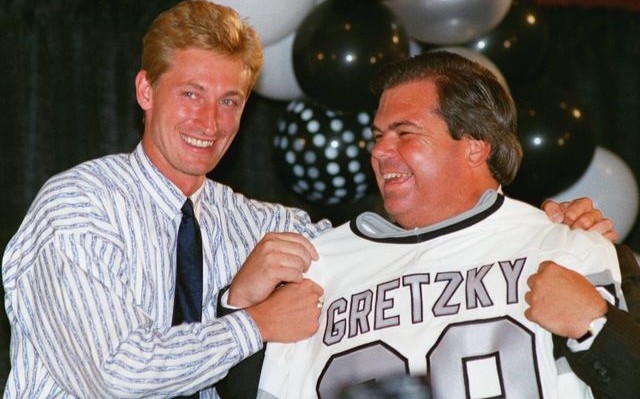
Into the deep end
Golden Pheasant won comfortably, under South African champ Michael Roberts, then was promptly thrown into the deep end in the Chester Vase against Sheikh Mohammed’s formidable pair of Old Vic, already a winner of two Derby preps, and Warrshan, a $9.5m son of Northern Dancer.
Golden Pheasant acquitted himself well to be second to Old Vic, who went on to win Derbys in Ireland and France. The performance was good enough for bloodstock agent Emmanuel de Seroux to buy Golden Pheasant for his high-rolling client, Bruce McNall, owner of the Los Angeles Kings hockey franchise. McNall sold a piece of the horse to his star player, Wayne Gretzky, and they were off to the races.
McNall had already won the 1987 Arc de Triomphe with Trempolino and would win another in 1990 with Saumarez. There were high hopes in the 1989 Arc for Golden Pheasant as well, especially after he defeated Nashwan, Europe’s best horse at the time, in the Prix Niel three weeks earlier.
But on the big day, drawn on the far outside, Golden Pheasant could only go through the motions on soft ground. Then it was off to America and the Charlie Whittingham stable, where firm ground awaited in California.
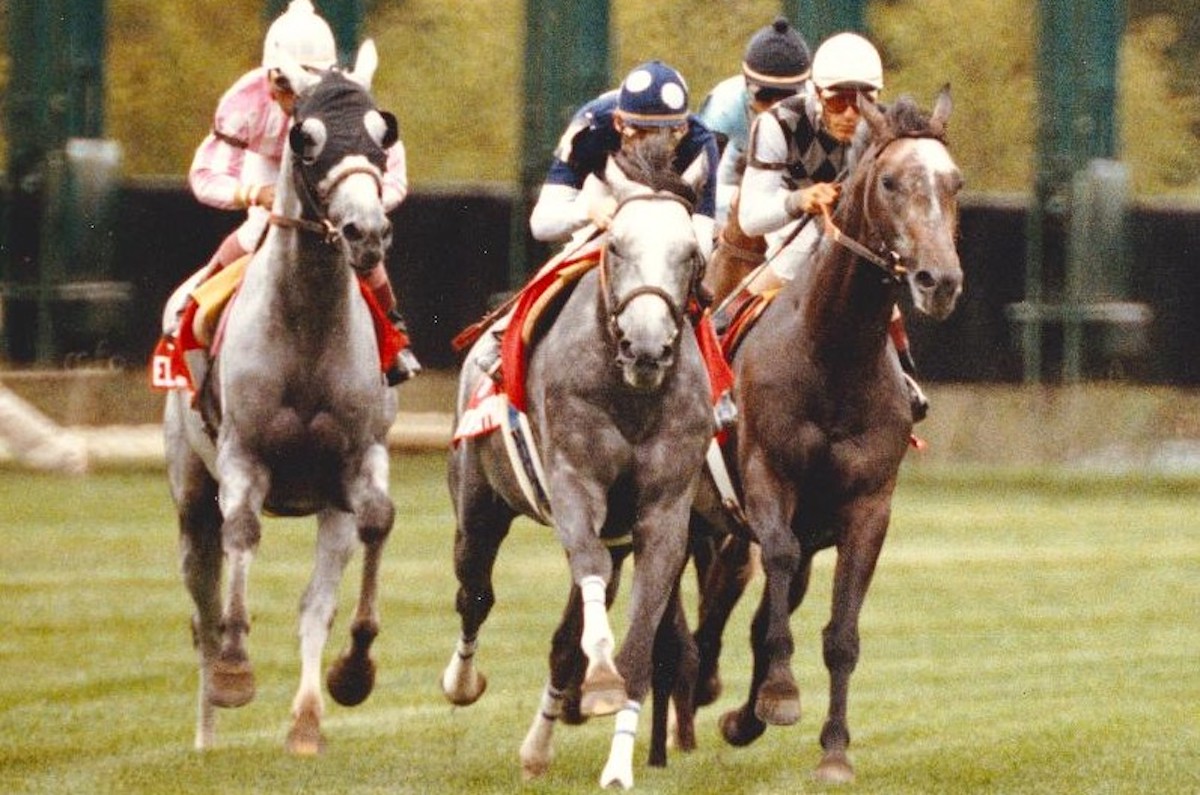 Whittingham quickly took the measure of Golden Pheasant as a horse of class and stamina. There were physical issues, but nothing the horse-wise Westerner had not seen many times before.
Whittingham quickly took the measure of Golden Pheasant as a horse of class and stamina. There were physical issues, but nothing the horse-wise Westerner had not seen many times before.
The trainer’s immediate target became the 1990 Arlington Million, the mile and one-quarter that was the North American turf highlight of the summer. To get there, Golden Pheasant won the John Henry Handicap at Hollywood Park (not a bad omen, since John Henry was a two-time winner of the Million), ran fourth in the Hollywood Turf Handicap, and then finished third in the Eddie Read Handicap at Del Mar, just to whet his appetite.
Gary Stevens, the man on board, was impressed but had his concerns. “He wasn’t the prettiest mover in the world,” said the rider, who was on his way to his first national championship in purses won.
“He was a daisy-cutter, and when I breezed him at Del Mar the grass was long and he was stumbling and bumbling pulling up. I knew he’d be one of the favorites for the Million, but I was riding some other good horses at the time.
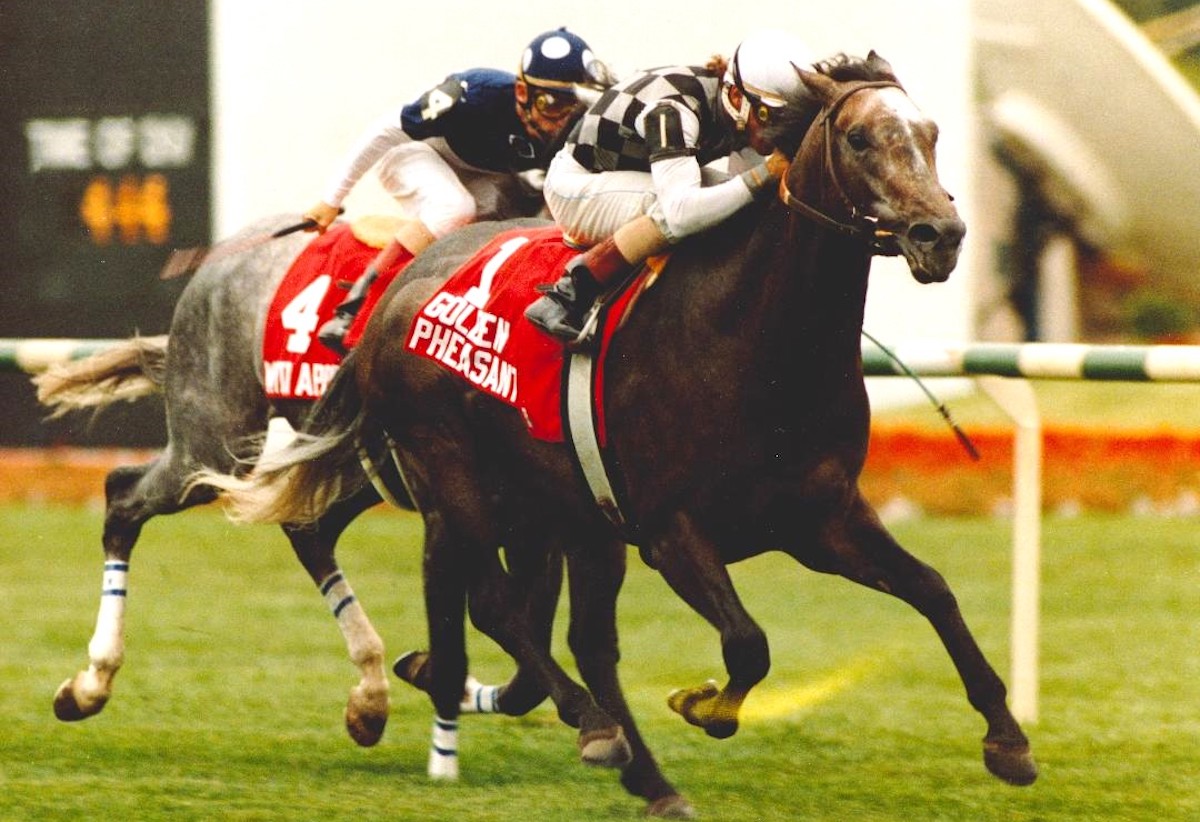 “So I told my agent, Ray Kravagna, I didn’t want to go to Chicago, because I didn’t like the way he felt,” Stevens said. “Ray looked at me, pulled his condition book out of his pocket, handed it to me and said, ‘Do you want to go tell Charlie Whittingham?’”
“So I told my agent, Ray Kravagna, I didn’t want to go to Chicago, because I didn’t like the way he felt,” Stevens said. “Ray looked at me, pulled his condition book out of his pocket, handed it to me and said, ‘Do you want to go tell Charlie Whittingham?’”
The answer, sensibly, was “no”. Let the record show that Stevens and Golden Pheasant were present and accounted for in a 1990 Arlington Million field that included Breeders’ Cup Turf winner Prized, defending Million champ Steinlen, and With Approval, who won the 11-furlong Bowling Green Handicap that summer at Belmont Park in world’s record time.
‘He exploded for me’
“He warmed up great that day, and then when we walked onto the grass he blew up about three sizes,” Stevens said. “Everything went right from the word go. I was able to save ground, and we had a great trip. When the time came he exploded for me.”
This qualifies as understatement. With Approval got first run at the head of the Arlington stretch and would have been home free under most scenarios. Then Golden Pheasant unleashed a final quarter mile that shaded 22 seconds to win pulling away, by a length and a half.
The Million was on September 2. Six weeks later, Golden Pheasant emerged from a routine workout at Santa Anita with a condylar fracture in his right foreleg. Surgery was performed to stabilize the bone, and the colt went to the sidelines, missing an opportunity to display his wares at the Breeders’ Cup, held that year at Belmont Park.
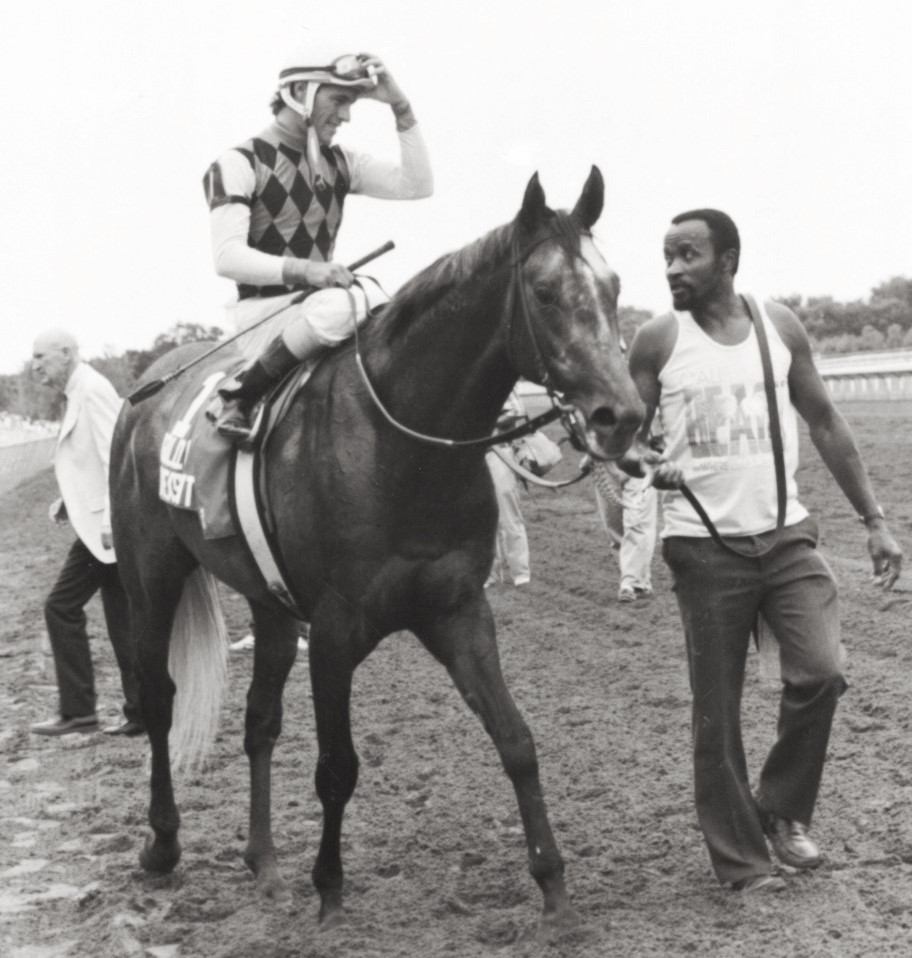 By the time Golden Pheasant returned to training, Tim Yakteen had been hired as a Whittingham assistant. “He was a very quirky individual,” Yakteen said. “He really didn’t enjoy training. He was always with a pony, because you never knew which way he’d decide to go.”
By the time Golden Pheasant returned to training, Tim Yakteen had been hired as a Whittingham assistant. “He was a very quirky individual,” Yakteen said. “He really didn’t enjoy training. He was always with a pony, because you never knew which way he’d decide to go.”
Golden Pheasant was also a handful for the farrier, in his case Tom Halpenny, blacksmith to the stars of the era. “He was just quirky about holding his legs up too long,” Halpenny said – there’s that word again.
“All of a sudden, he’d just run backward. He wasn’t mean or anything. You just couldn’t hold him up too long, the minute you started pounding the nails into his feet.
“We thought maybe the banging bothered his ears or something. So we put cotton wool in his ears, and he still did it. But he was all right once you got a couple of nails in.”
Golden Pheasant’s comeback race, on Sept. 11, 1991, was a disaster. He basically pouted his way around the Del Mar course until Stevens gave up and galloped home at the back of the field.
Undaunted, Whittingham sent his horse back to work one month later at Santa Anita. Golden Pheasant rewarded the trainer’s faith with a solid closing kick to finish a close second under Corey Nakatani, who stepped in for the traveling Stevens.
Destination Japan
Since it was too late to qualify for the 1991 Breeders’ Cup at Churchill Downs, the Golden Pheasant brain trust aimed for the Japan Cup, scheduled for November 24. Golden Pheasant had the credentials, but as far as the JRA officials were concerned he was light on preparation. The two allowance races were not enough, so Whittingham looked to the Budweiser International at Laurel on Oct. 19 as a final Japan Cup prep. Yakteen made the trip.
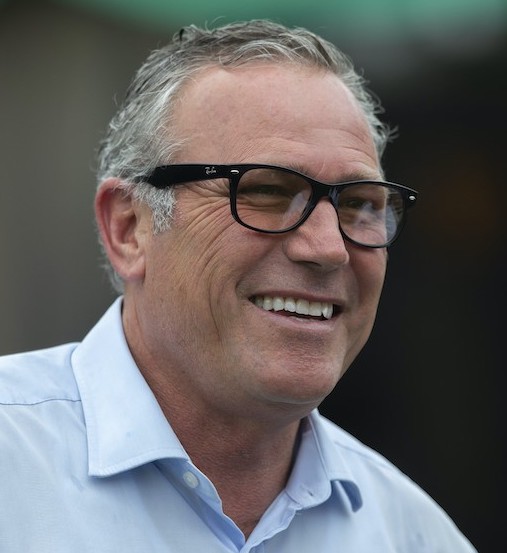 “We knew he loved to hear his feet rattle, and it had poured the day before the race,” said Yakteen, who has gone on to a successful training career of his own.
“We knew he loved to hear his feet rattle, and it had poured the day before the race,” said Yakteen, who has gone on to a successful training career of his own.
“I walked the course, and it seemed fine, but I was still a bit naïve. For Golden Pheasant, it was simply too soft. When time came to make his run, it was clear he wasn’t handling it. But we did get a good mile-and-a-quarter workout.”
Then it was off to Japan, accompanied by groom Charles Clay and exercise rider Lisa Martin. Clay also was the man at the shank for Whittingham’s 1989 Horse of the Year Sunday Silence, who by then had settled into his Japanese stallion career.
“Golden Pheasant needed Clay,” Yakteen said. “Clay talked his language. They had a relationship. I can still hear his voice today, talking to the horse in the stall right next to the office. He would tell him this and that, where to put his droppings, because Golden Pheasant was a very messy horse, and Clay was always trying to keep his gray coat clean.”
Yakteen arrived once quarantine was cleared. “The surface he trained on in quarantine was deep and sandy,” Yakteen recalled. “He absolutely hated it, and journalists covering the race noticed. They commented on how unhappy the horse looked. When he got to the turf at Fuchu he was much more comfortable. We got a good five-eighths breeze into him, and everyone felt a lot better.”
But he was still Golden Pheasant. “Our biggest issue was making sure he didn’t lose the rider,” Yakteen said. “When he pulled up after an exercise you didn’t know if he was going too go left, right, or roll on the ground. He was a little guy and Lisa had long legs, so she rode him long. That helped, but it was always an adventure.”
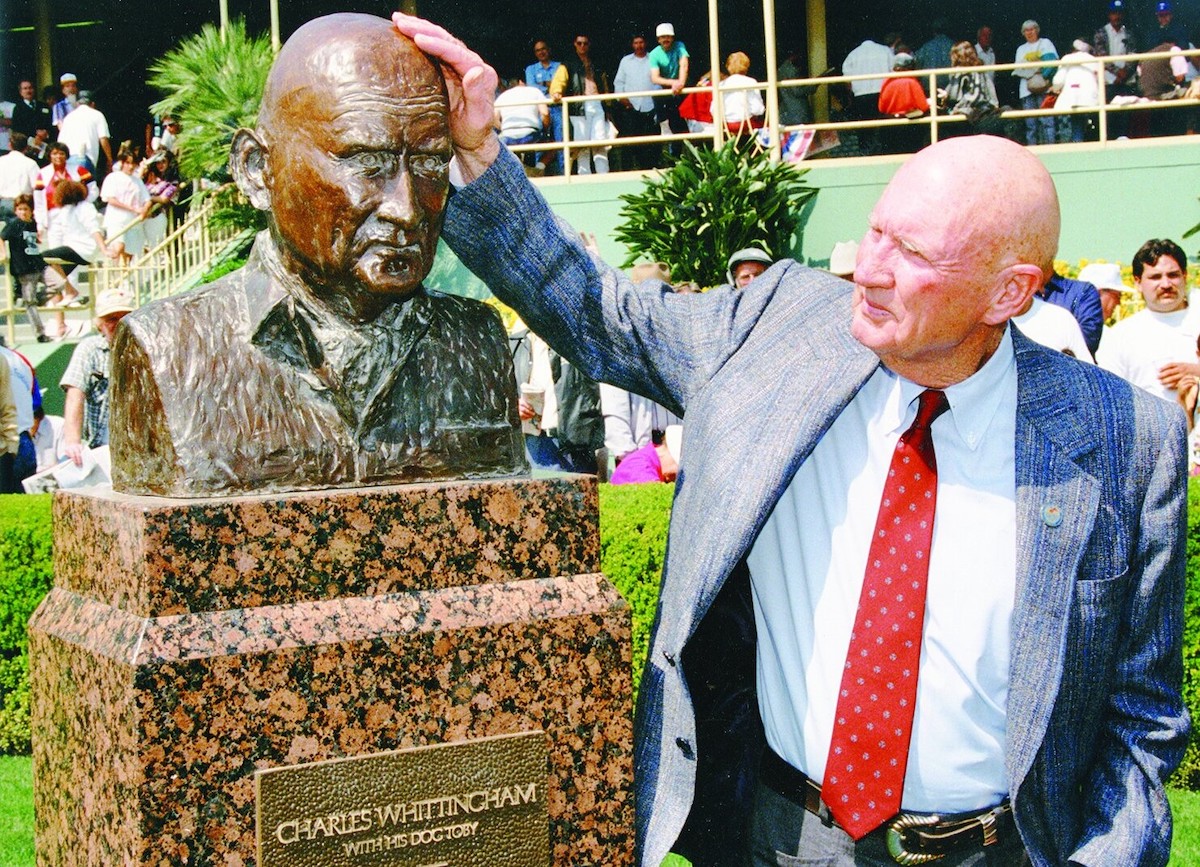 Through the first 10 runnings of the Japan Cup, winners had come not only from the US, but also France (Le Glorieux), Britain (Jupiter Island) and Ireland (Stanerra) plus Australia (Horlicks) and New Zealand (Better Loosen Up).
Through the first 10 runnings of the Japan Cup, winners had come not only from the US, but also France (Le Glorieux), Britain (Jupiter Island) and Ireland (Stanerra) plus Australia (Horlicks) and New Zealand (Better Loosen Up).
For 1991, the French sent the fillies Magic Night, winner of the Prix Vermeille at Longchamp, and Wajd, the Classic-placed daughter of Northern Dancer-Dahlia who cost $1.3m as a yearling. Drum Taps and Rock Hopper, fresh from their pitched battle in the Cumberland Lodge Stakes, carried the British hopes.
Adding depth to the cast, Australasia was represented by Shaftesbury Avenue, winner of half-a-dozen G1 races in Australia, and Rough Habit, the New Zealand ace on his way to an epic career, while Mejiro McQueen, winner of the Kikuka Sho (aka the Japanese St Leger), loomed the best of six local runners under the young riding sensation Yutaka Take.
‘The crowd was phenomenal’
“Entering the walking ring was like walking into a football stadium,” Yakteen said. “The crowd was phenomenal. I’d never seen anything like it. Because there was no pony to go with him, my plan was to get Golden Pheasant onto the racetrack, then I was going to hoof it around to one of the walking sheds to meet him and walk him to the gate.
“Take’s horse was behind us, and when they stepped onto the track it sounded like the grandstand was coming down,” Yakteen continued. “Golden Pheasant took off. I guarantee you he went a quarter in 21 and change. It was a matter of Gary being able to stop the horse, or else he was going to run a mile and a half before the race. Gary shoved him up the butt of Magic Knight, and they slammed on the brakes.”
A sweat-drenched Yakteen finally caught up with his horse and jockey, and walked them to the gate. “Just before loading, he jumped sideways,” Yakteen said. “I think Gary ended up pulling a hamstring.”
After all that, Golden Pheasant was away cleanly. Stevens placed him at the back of the field and in the clear as the 15 runners began to string out around the broad clubhouse turn on their once-around journey. Entering the backstretch, George Monarch led a cluster of fellow Japanese hopefuls, with Wajd and Mejiro McQueen settled in not far behind.
“I felt like I was cocked and loaded at every point in the race,” Stevens said. “We were getting all the right splits through the field, and he was really comfortable all the way around.”
Rounding the distant turn, Golden Pheasant said farewell to Drum Taps and Rock Hopper and set sail on the outside. As the field entered the long final straight, with its slight incline to the finishing plateau, Theirry Jarnet struck to the front with Wajd, then was quickly challenged by Magic Night and Alain Badel. But what’s this closing fast on the outside – a gray streak topped by black and sliver silks and a pink cap?
“Golden Pheasant had this distinct white triangle on his forehead,” said Yakteen, who had positioned himself near the finish. “All I saw was a white triangle on this little horse pull to the outside and shoot home, in what I think is still the fastest final quarter in Japan Cup history.”
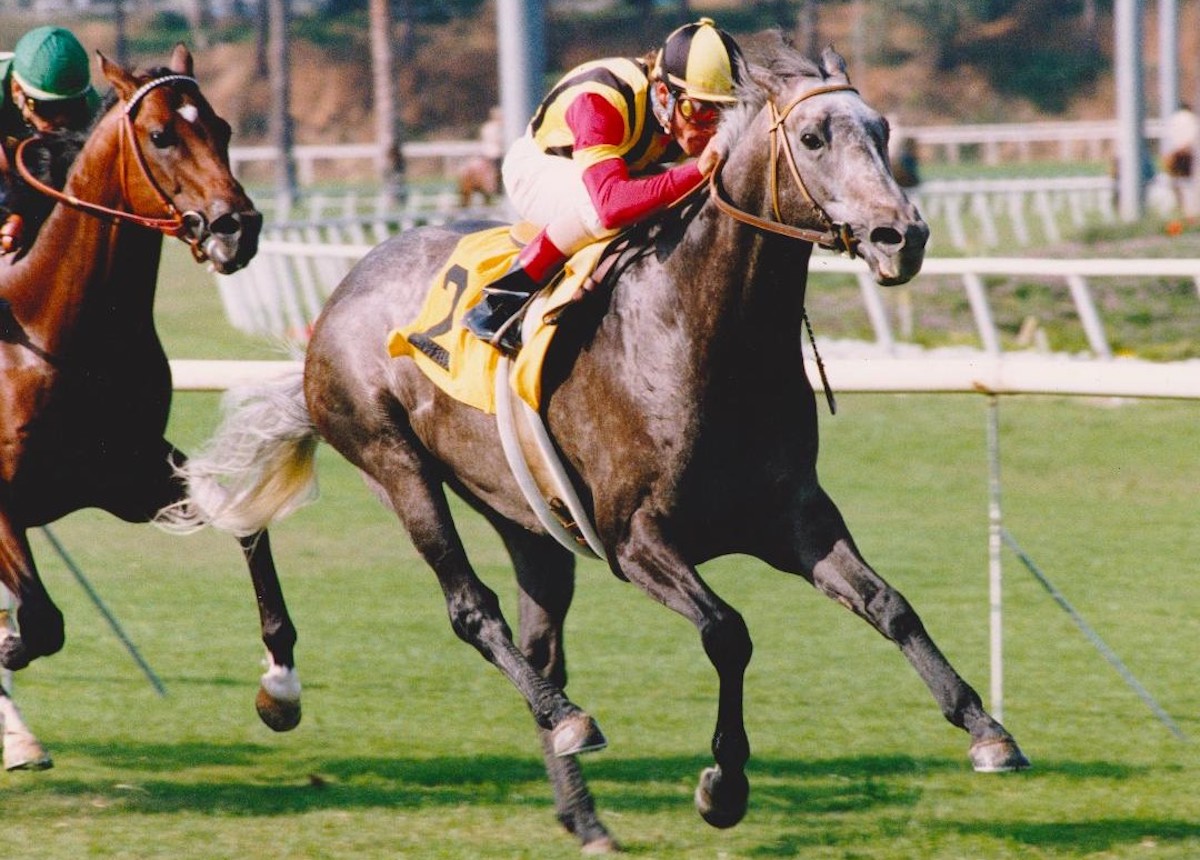 The winning margin was a length and a half. Stevens and Badel exchanged post-race niceties pulling up ahead of third-place Shaftesbury Avenue, while favored Mejiro McQueen finished fourth.
The winning margin was a length and a half. Stevens and Badel exchanged post-race niceties pulling up ahead of third-place Shaftesbury Avenue, while favored Mejiro McQueen finished fourth.
“The greatest impression I’ve ever had in racing was the applause he received after the race,” Yakteen said. “I think I was given five different trophies, from everyone from the minister of defense to the minister of the interior. I was on my own little podium while Clay stayed with the horse, and they draped a long, silk shawl over Golden Pheasant.
‘When are you coming home?’
“I couldn’t wait to get back to the hotel to tell Charlie we’d won,” Yakteen added. “His reaction was, ‘When are you coming home?’”
In the wake of the Japan Cup, Golden Pheasant was sold to the Shadai Farm of the Yoshida family. “Because he was there to race, he had to return to America instead of going straight to the farm,” said Emmanual de Seroux, who brokered the deal. “Once he was back with Whittingham, they decided to continue racing him, in hopes of having a big year.”
In seven starts at age six, Golden Pheasant could manage only a win in the G2 Inglewood Handicap at Hollywood Park. The highpoint of the campaign came at Arlington Park, when he came flying once again only to finish third, beaten a head and a neck, in the 1992 Million.
“He ran a winning race that day,” Stevens said. “He was the Golden Pheasant of old.”
Golden Pheasant remains the only horse to win both the Arlington Million and the Japan Cup. In recognition of the accomplishment, the Japan Racing Association sent a Japanese cherry tree to Arlington, where it was planted in the paddock area.
Arlington Park is gone now, demolished to make room for development, and the cherry tree has disappeared. As a stallion, Golden Pheasant stood nine seasons a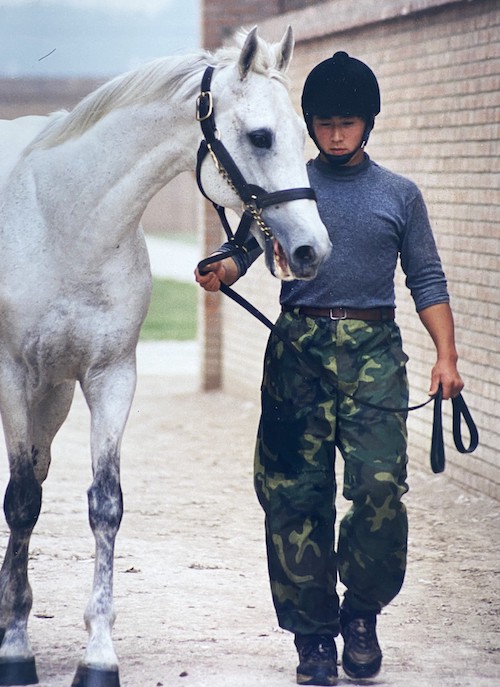 t Shadai, siring only a handful of stakes-class performers before he was sent to China as part of an attempt to establish a breeding and racing industry at the heart of the tightly controlled economy, launched in 2000 at Beijing Lontou Farm.
t Shadai, siring only a handful of stakes-class performers before he was sent to China as part of an attempt to establish a breeding and racing industry at the heart of the tightly controlled economy, launched in 2000 at Beijing Lontou Farm.
Carl Outen, a veteran New Zealand farm manager, welcomed the 16-year-old Golden Pheasant to Lontou for the 2002 breeding season.
“He was a bit of a superstar in China,” said Outen, now with historic Cambridge Stud in New Zealand. “Not only was he a Japan Cup winner, but by then he was almost pure white. People loved posing with him for photos. He had a wonderful temperament.
“The conditions were quite different in Beijing from what he knew in Japan, but he he acclimatized well,” Outen noted. “I had young boys from Inner Mongolia with limited experience with Thoroughbreds, and they could lead him anywhere.”
Then the plan collapsed. 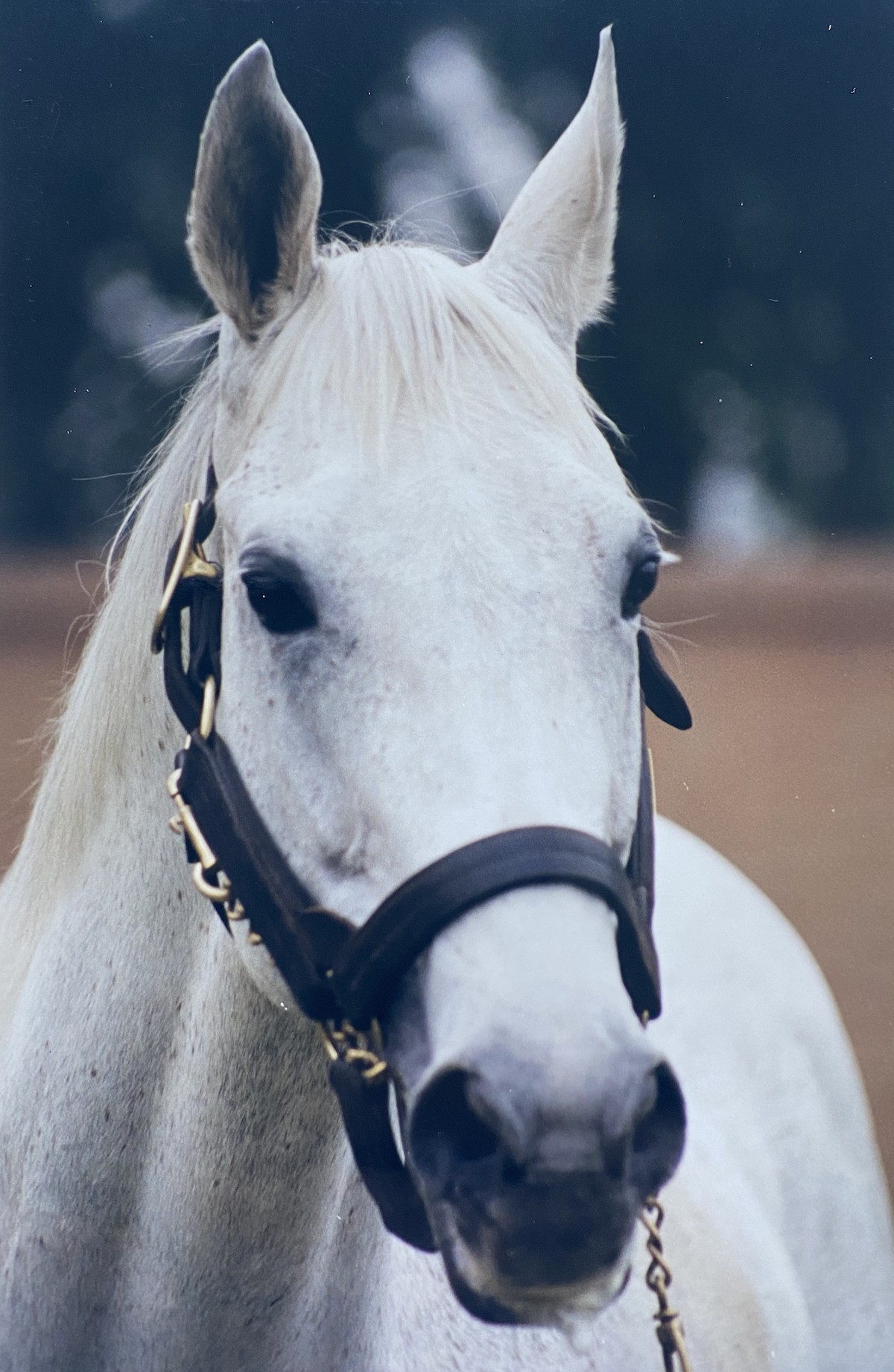 “We had two-year-olds and three-year-olds in training, in hopes of attracting owners to participate,” Outen said. “Unfortunately, after just a few years the Chinese government shut down the racecourse in Beijing. There was nothing left there for me, so I moved on. But I was very concerned for the horses left behind.
“We had two-year-olds and three-year-olds in training, in hopes of attracting owners to participate,” Outen said. “Unfortunately, after just a few years the Chinese government shut down the racecourse in Beijing. There was nothing left there for me, so I moved on. But I was very concerned for the horses left behind.
“However, from what I understand Golden Pheasant was moved to a different property where they specialized in eventing and show jumping,” Outen said. “He still had great fertility and plenty of libido, so there were plenty of good years still in him.
“His offspring were durable, tough, and staying kind of horses. For our goal of breeding racehorses in China, he was ideal. It was a shame he didn’t get a chance to prove it, but he was a great horse to be associated with.”
• Visit the Japan Racing Association website
• Read all Jay Hovdey's features in his Favorite Racehorses series
View the latest TRC Global Rankings for horses / jockeys / trainers / sires


